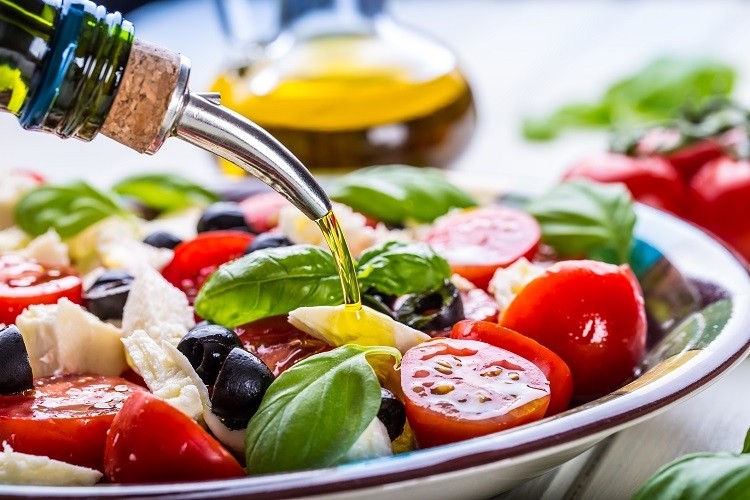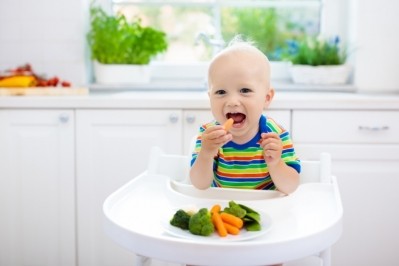Are high-sugar adverts contributing to obesity in Mediterranean countries?

The Mediterranean diet has long been associated with good health. The diet is high in vegetables, fruits, legumes, nuts, beans, cereals, grains, fish, and unsaturated fats, while also being low in meat and dairy.
However, adherence to the diet is faltering in Mediterranean countries, particularly amongst children and teenagers, where obesity and overweight are on the rise.
Of the three main meal opportunities in a day, breakfast appears to be a key problem area. Consumption of packaged, convenience products is increasing. In Spain, a researcher is pointing the finger at industry.
Spanish food brands are promoting unhealthy products for breakfast, according to Mireia Montaña Blasco from the Open University of Catalonia’s Faculty of Information and Communication Sciences.
“From our point of view, public health guidelines might require more emphasis on reducing the intake of added sugars, and the Spanish food industry should be more involved in producing healthier products to reduce obesity rates, especially in childhood.”
Spotlight on children-targeted adverts
A traditional Mediterranean breakfast is made up of wholegrain cereals or bread, milk-based products, and vegetables or fruits. The meal should contain around 30% of the dairy’s calorie-intake.
It is thought that up to 30% of children and teenagers either don’t eat a ‘balanced meal’ at breakfast time, or otherwise skip breakfast altogether. In Mediterranean countries, this trend is particularly prevalent.
At the same time, Mediterranean countries tend to have higher obesity levels in children. In Spain, about one in three children are overweight. The country was recently identified by the World Health Organization as the country with the highest proportion of childhood obesity in Europe.
Blasco acknowledges there are multiple causes for this shift away from the Mediterranean diet, one being advertising.
Given that exposure of child-targeted unhealthy ads is thought to boost children’s intake of advertised brands’ products, the researcher sought to highlight links between advertisements of children’s breakfast products, the presence of popular characters to encourage their purchase, and their sugar content.
In total, the researcher analysed 355 advertisements from 117 different products that appeared across Spanish media, including the internet, television, radio, print, and outdoor advertising.
Elevated sugar content
Findings revealed that the most advertised product category for children was biscuits, followed by chocolate products.
The researchers also analysed the nutritional labels of the products targeting children, and compared them with those aimed at adults. “We observed that a vast majority of products targeted to children had a higher sugar content percentage than the same category of products aimed at adults,” they noted.
“The sugar content average was established at 10.25% for the adult products, however, it increased to 36.2% for the products aimed at children.”
The research also analysed marketing that could lend itself to ‘pester power’. Food manufacturers have long been using child-friendly cartoons on food and drink packaging to increase the appeal of products to consumers, and pester power – otherwise known as the ‘nag factor’ – refers to children’s repeat pestering to influence their parents to purchase advertised products.
The research found that in total, 38 popular characters were used in the analysed adverts. For products aimed at children, characters included licensed figures from Star Wars, Pokémon, and Mario Kart. A total of 12 characters appeared in children’s advertising.
Analysing the sugar content of these products revealed that those using licensed characters had an average sugar content of 30.5%.
Less variety and lower quality
According to the researchers, the principal finding was the ‘huge difference’ between adults’ and children’s breakfast product advertisements, concerning both variety and quality.
To start with, adults’ advertisements were distributed into 12 categories, whereas children’s were categorised into just seven. Adult’s food categories were also more diverse, and included healthy food options such as cereals, nuts, olive oil, yoghurts, or basic Mediterranean diet foods.
Children’s advertised products were also found to be of lower quality than those advertised to adults. Cereals were flagged as a category to watch, with children’s versions containing an ‘alarming percentage’ of sugar compared to adults’.
“The improvement of children’s breakfast products needs to be a primary concern in public health strategies to reduce sugar,” the researcher noted.
Blasco also suggest such products should be reconsidered within a government-set targets and regulations framework. “As a regulatory measure, taxes on high-sugared products might be increased,” she noted.
Overall results seem to indicate that the Spanish food industry is promoting unhealthy products for breakfast, especially those targeted to children – where sugar content is around 36.2% on average, she continued in the study.
“The improvement of children’s breakfast products needs to be a primary concern in public health strategies in order not to lose adherence to the Mediterranean diet in young generations.”
Blasco continued: “Greater efforts must be made to train children in nutritional education, so as not to lose the include of the Mediterranean diet, which has been so highly appreciated in Spain and the surrounding Mediterranean region.”
Source: Children
‘Breakfast Food Advertisements in Mediterranean Countries: Products’ Sugar Content in the Adverts from 2015 to 2019’
Published 31 December 2020
DOI: https://doi.org/10.3390/children8010014
Author: Mireia Montaña Blasco





















